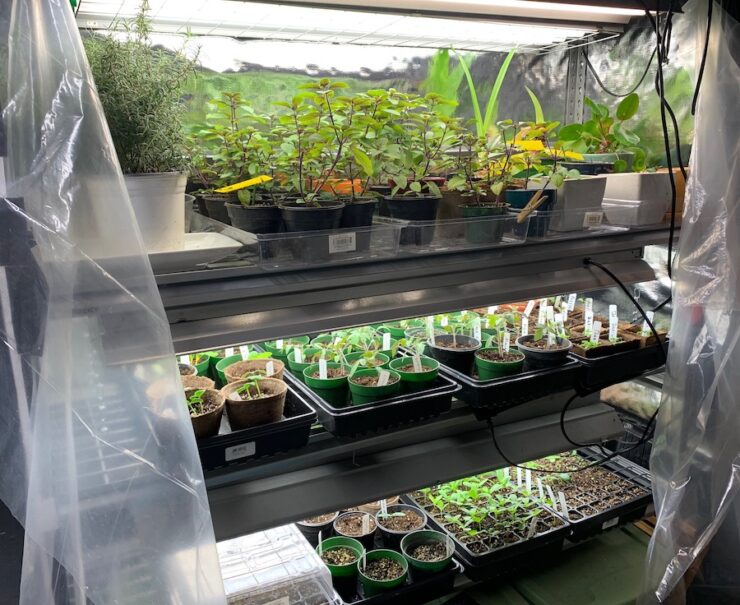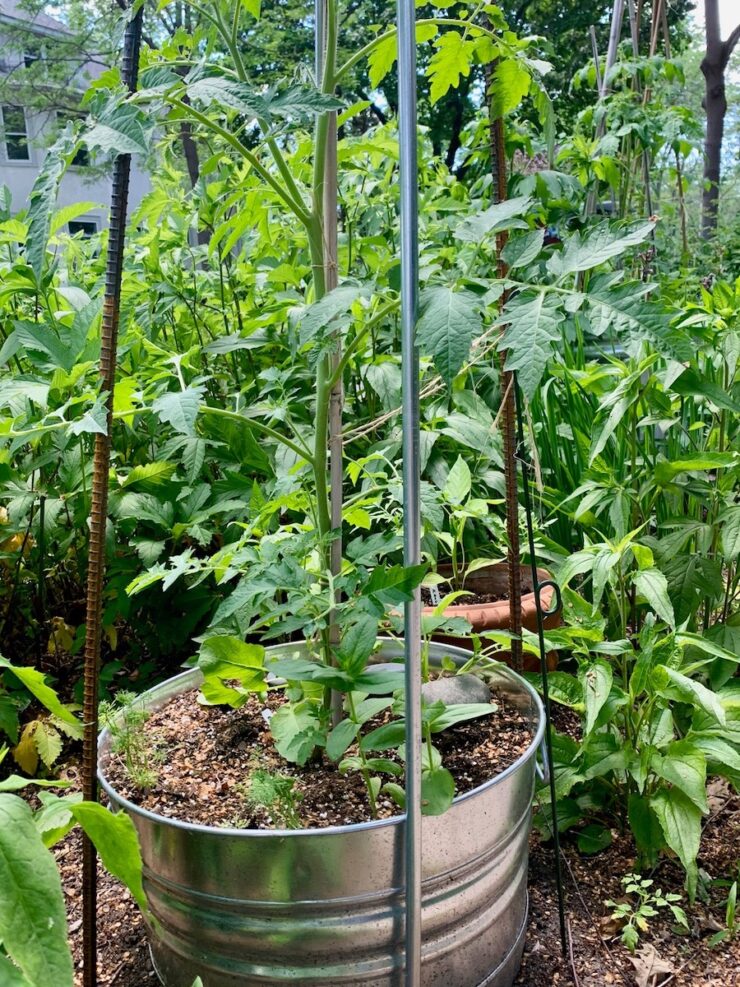I’ll just say it: It took a global pandemic for me to actually grow tomatoes from seed successfully. Sure, I’ve saved tomato seeds and tried to start them under lights in my basement in the past, but something (or lots of things) always went wrong. I think that’s because I’m more of a big-picture person — details, schematics, I think, as my loaves of bread fail to rise and the quilt I started 20 years ago is still in pieces in a box.
But this year, fearing that I might not be able to buy tomato seedlings because of the coronavirus quarantine, I planted a few varieties, using seeds I already had stored away in the basement — black cherry, Black Krim, red and yellow mini pear tomatoes from Renee’s Garden, as well as Cherokee Purple.
I didn’t have high hopes, but I’m happy to report that every single tomato seedling survived in my care and, you know, it really wasn’t that hard. I might even start my own tomatoes from seed from now on. But let’s not get too carried away right now.
Now that the tomatoes are all planted, the next challenge is to keep them healthy all season. Anyone who grows tomatoes knows weird stuff can go wrong. Sun is important, of course, and more is better. Now that the trees have matured around our yard, my tomatoes only get about five hours of sun, so it’s “not exactly Tuscany over here,” as a friend recently said to me. But we get enough of a crop to make loads of great salsa, so it’s worth it.
If you’re struggling with not enough sun, one thing you can do is grow your tomatoes in large pots on rolling plant stands. I got mine at Ikea a long time ago, and a lot of garden centers carry them now, too. If you’re home a lot, like many of us are these days, it’s easy to roll your plants into the sun as it moves around throughout the day.
If you’re a plant enthusiast, finding new ideas to create a breathtaking garden can be hard but we’re here to help!
And here’s a neat tip that you might not know: Tomatoes should be buried deeply at planting time. I know that sounds weird since most things should not be buried underground like that.
But what you want to do with tomatoes is pull off the leaves along the lower two-thirds of the stem, and bury that part in a nice, deep hole so that only the top third is above ground. Doing that will help your tomatoes develop much stronger root systems because buried stems sprout additional roots to support the plants.
Taking time to amend your soil will help your tomatoes thrive, too. Tomatoes will grow if you plop them just about anywhere that gets good sun, as long as you water them. But if you want plants to produce more fruit and be their healthiest, mix some composted manure into your beds and pots at planting time. You can have some delivered, or you can buy it in bags at most garden centers.
Composted manure will help enrich the soil, but it isn’t enough to keep your tomatoes well nourished. Like you, they need some food, so get yourself some fertilizer. I prefer organic fertilizers to synthetic, but both will do the trick.
I used to use fish emulsion for most of my gardens, and I still use it to feed perennials and annuals. But I’ve found that my vegetables and fruit do better when I use products with slightly higher levels of nitrogen, phosphorous and potassium, as well as other organic ingredients. For tomatoes, my go-to fertilizer these days is Espoma’s Tomato-tone.
Let’s talk about watering. Tomatoes like water, but too much can be a real problem. Don’t just spritz your plants. Water when the soil feels like it’s drying out but not to the point of being a desert. Let the water run long enough that the roots get a good soaking.
Try your best to water at the soil line because getting plants’ leaves wet all the time will increase the chance that your tomatoes will get all sorts of ugly and terrible blights and viruses. And that’s very sad after all the hard work it takes to grow these beauties.
OK, on to pruning. It’s important to prune tomatoes because they will produce better fruit and be less susceptible to diseases if the foliage and fruit are not all tightly jumbled up together.
The most important thing to know about pruning is that tomatoes are either bush varieties that grow to a reasonable, compact height and set fruit, or they are indeterminate varieties, which means they grow like vines and pretty much grow and grow until disease or frost kills them.
You don’t really need to prune determinate tomatoes, aside from pinching off (or cutting) all of the foliage below the first cluster of flowers that appears. Pruning above those flowers (unless something breaks or is yellow) just reduces the amount of tomatoes you could have had.
Indeterminate varieties need more intervention, and there are loads of videos online demonstrating helpful, clever ways to prune them but, as I said earlier, I am not a detail-oriented soul. So I’ve gotten the gist of what to do, but I don’t do everything because that would make my head pop off.
Most of my tomatoes are heirlooms, and most heirlooms are indeterminate, so here’s what I do, and it works pretty well. Pinch or cut off leaves and stems below the first cluster of flowers, like you do with determinate varieties. This keeps foliage away from the soil, which can splash up on plants and cause disease problems.
Tie your indeterminate tomatoes to a sturdy support, using torn up rags or whatever you have that won’t cut into the stems, and keep tying up the plants as they grow. Once you start seeing flowers, it’s time to begin pruning out suckers, which sprout in the V-shaped spaces where branches meet stems. It’s good to get rid of most suckers because they can drain plants’ energy and keep them from producing well.
The other things you need to prune are the branches. As indeterminate tomatoes grow, fruit-bearing branches will grow off the main stem. You want some of those, but not all of them or you’ll end up with a tangled mess.
As you would with a tree, leave the main “leader” stem alone, but cut off some of those branches, leaving about four or five — or more. I leave more because I can’t go all crazy with that sort of thing. You’ll find your own way to do things. It’s not as complicated as you might think.














